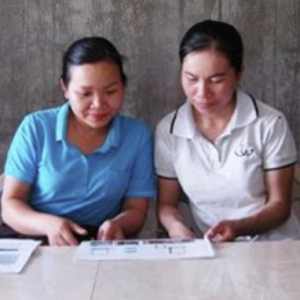
Child Marriage and Gender Inequality in Vietnam
Child Marriage and Gender Inequality in Vietnam
Minh Hung Tran
Every year, 12 million girls are married before the age of 18. That is 23 girls every minute and nearly one every two seconds. These striking statistics is not simply numbers; They represent millions of young lives are interrupted, dreams put on hold, and basic rights are denied. Child marriage does not only interfere human rights, but it also mirrors clearly gender inequality in the form of action. Although the world has made significant progress to improve this nagging problem, the issue persists. In countries where poverty, cultural traditions, this thorny issue becomes more urgent since limited access to education becomes a barrier. Vietnam, while often praised for its rapid development, continues to face this challenge, especially in ethnic minority and rural communities.
Why Child Marriage Persists?
Child marriage is legally defined as union where one or two individuals under 18 got married. While it affects both boys and girls, girls are disproportionately impacted due to the entrenched gender norms which values them less than boys. In globe, regions like Sub Saharan Africa and South Asia have the highest rates which is because girls are often seen as financial burdens or commodities and “selling” them to a rich family is the fastest way to fix those familial problems.
Poverty is a major driver. In many communities, marrying off a daughter early means one less mouth to feed and sometimes even brings a dowry or economic benefits. Lack of access to education and healthcare even deepens the problem, making it becomes a vicious cycle of rights and dreams being taken away from girls. When girls are not in school, they are more likely to be “ready” for marriage. In most of cases, the decision is not theirs to make.
Early marriage is followed by early pregnancy; It increases the risk of complications during childbirth and even maternal death. Psychologically, many girls suffer from overwhelm, depression and isolation as they are forced into adult responsibilities way too soon. Child marriage also places them at higher risk of domestic violence as they are treated like property and servants in the households, with little legal or social support available.
Picture of Child Marriage in Vietnam:
In Vietnam, the national laws state that the legal age for marriage is 18 for women and 20 for men, but the enforcement of this law is not consistent, particularly in remote and ethnic minority areas. According to data reported by UNICEF and Vietnamese government, child marriages remain common among groups of the Hmong, Thai, and Dao. In these communities, the age of 15 or 16 is allowed to get marriage and is often accepted as part of their cultural traditions. For some, it is seen as a method to preserve family honor or to follow a long-established custom. Unfortunately, this leaves many girls without legal protection or support.
In order to improve the situation, the government of Vietnam has launched a National Action Plan on Child marriage, and some NGOs are working with local communities to raise awareness and promote girl’s education. However, contradict to the notable effort government has put, the challenge remains. A one-size-fits-all solution won’t help, especially when culture, language, and geography vary so widely across regions. What is needed right now is a community based, culturally sensitive approach, where education campaigns involve not only girls, but also boys, parents, communities’ leaders, and teachers.
Education is the most powerful key to against child marriage both globally and locally. When girls stay in school longer, they are granted an access to the world outside, and less likely to marry early and more likely to become financial independent. Providing families with financial support, access to schools, and accurate information about reproductive health can make a remarkable difference in which family will understand what is the best to do and obey the legal laws.
Child marriage is not just a cultural issue, it is human rights issue rooted in gender inequality. In Vietnam and across the world, young people, girls in specific, are being denied making their own life choices. As the next generation leaders, youth have the power to make differences, to speak out, raise awareness, and demand change to not let anyone decide where they should go and where they should end up at. By supporting education and challenging harmful traditions, we can help to build a future where every girl is free to grow, learn, and lead.